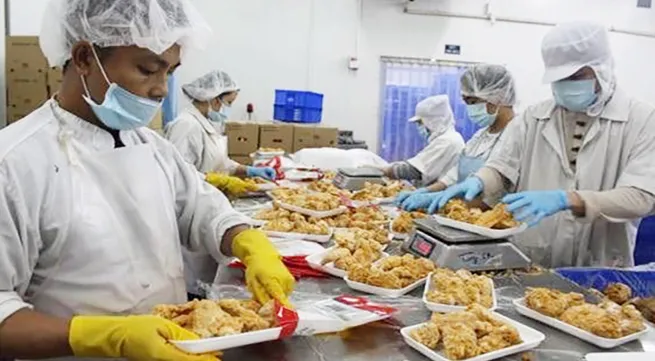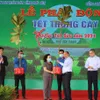Increasing export value of livestock products

This result remains modest compared to its potential, so how to increase the export value of livestock products remains a challenge for the industry.
Inadequacies
According to the Department of Livestock Production, Vietnam has about 520 million poultry, nearly 5.9 million cows and 27.3 million pigs. Despite the positive growth in the number of livestock and poultry, the export value of these products has yet to meet expectations.
According to experts, the most difficult standard for Vietnamese exporters to meet is livestock products must come from a disease-free area.
So far, Vietnam has only 32 disease-free sites including 31 district-level and one provincial-level site, alongside 138 commune-level disease-free sites and 1,662 farm-level disease-free sites.
There still remains many hidden epidemic risks, for example, from October 2020 to present, the Lumpy Skin Disease (LSD) on buffalos and cows has appeared for the first time. Meanwhile, Vietnam has small-scale and scattered animal husbandry with poor governance, resulting in a reduction in productivity and increases in production costs.
The control of diseases, food safety, and environmental factors still face many shortcomings, particularly in household farming and scattered slaughtering. Dangerous diseases such as African swine fever has not been controlled with a high potential risk of outbreaks on a large scale, leading to increasing input costs for livestock production.
Many livestock facilities have not treated waste properly, causing environmental pollution and a precious wasting organic fertilizer source for crops. In addition, the number of small, manual, and unsafe slaughterhouses is still higher than industrial variants.
Due to small-scale and scattered production, it is difficult to apply advanced technology in production while the management skill level in livestock farms is weak due to a lack of training facilities.
In particular, production costs are higher than other countries in the region and the world, making it difficult to compete with foreign products. The consumption of livestock products has to go through many intermediaries, pushing the selling price up while producers are often underpriced.
According to Acting Director of the Department of Livestock Production Nguyen Xuan Duong, the organisation of livestock production under value chains accounts for only a low proportion while a lot of livestock material, especially feed and veterinary medicine has to be imported in large quantities, resulting in a reduction in the added value of domestic production.
The forecasting for and estimation of the livestock market are still inadequate and the proportion livestock products exported is low compared to other agricultural products.
Promoting high-quality livestock products
Director of the Department of Animal Health Pham Van Dong said that the State should invest in building livestock production areas ensuring disease safety and food safety to contribute to boosting the export of livestock products to other markets in accordance with the regulations of the World Organisation for Animal Health.
While developed countries mainly organise large-scale farms, small-scale livestock production still accounts for a large proportion of production in Vietnam, so it is necessary to divide livestock production into two groups to devise appropriate solutions and orientations.
Regarding household production, it is advisable to gradually switch to bio-safe breeding and the raising of indigenous pig specialties on the basis of promoting hybrid advantages, and making use of agricultural residue as well as boosting chain management.
Regarding industrial husbandry, it is necessary to improve the productivity and quality of the sow herd, and improve the raising process to lower product costs. It is also important to foster relationships with partners across the world regarding investment in science and technology to increase the added value of livestock products.
Vietnam should invest more in factories that produce and process safe livestock and poultry meat according to the 3F (feed-farm-food) standards.
Meanwhile, the relevant agencies need to regularly exchange information and foster market promotion. In the current context, enterprises should look to the production and export of processed products. Thus, they must make synchronous investment in cold-storage warehouses and modern production lines meeting international standards.
At the same time, it is necessary to restructure breeding and raising techniques in accordance with environmental protection standards.
To have more good-quality livestock products, capable of competing and exporting with a higher added value, we need to have specific planning, more realistic policies, and standard breeding processes in the future.
At the same time, it is necessary to invest in deep research to link production with the needs and requirements of each export market. The livestock sector should continue to expand and export products to markets with high levels of potential such as the Republic of Korea and the Philippines.
Rapid changes are needed to adapt to the increasing impact of climate change, complicated developments in diseases and incremental changes in science and technology.
If the above solutions are implemented well, the livestock industry will have the opportunity to continue to create products with competitive prices, high quality, and increased export value in the future.
Tags:





